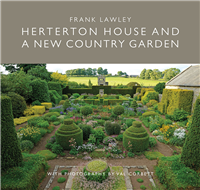A Rothschild Family Garden
‘If you are a home gardener looking for inspiration, you will find it here. If you are a garden historian searching out old traditions, read on. If you are a professional hoping to learn new tricks, you have come to the right place. Or if you are an armchair gardener looking to escape to a magical realm behind high garden walls, where no one but you will be invited, this book is for you.’ - Gregory Long, President, New York Botanical Garden The productive garden at Lord Rothschild’s private house, Eythrope in Buckinghamshire, is legendary in the garden world for the excellence of the gardening and as a haven for traditional techniques that might otherwise be lost. Under the leadership of the renowned head gardener, Sue Dickinson, this garden works on a scale that is now rare, producing, year-round, all the fruit, vegetables and flowers for a country house where entertaining still happens on a grand scale and where everything is done to the highest standards. Paradise and Plenty opens a window on a garden that has, until now, been kept intensely private, and on a world beyond most gardeners’ dreams. But in this book everything shown is useful as well as beautiful. Gregory Long points out in his introduction that as more and more people turn to growing their own, books are needed that show the techniques of dedicated cultivation, as well as the results. Many of the techniques used at Eythrope are old and tried, but have fallen out of use almost everywhere else. Others have been adopted more recently, as careful trials have proved their worth. If you want techniques for preparing soil, growing herbs, pruning apple trees, training roses, planting bulbs in pots or propagating many different plants, or which are the best tried and tested tomatoes, snowdrops or chrysanthemums to plant, you’ll find out here. In the words of the author herself, ‘This book has to be how as well as wow.’























